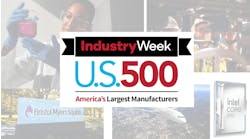Improve Retention With a Workplace Culture Assessment
You have a workplace culture whether you realize it or not. Culture goes beyond how you treat people and how they treat each other. It’s also about improving employee satisfaction and fostering teamwork and innovation. A strong workplace culture leads to higher retention rates, makes it easier to attract new employees and customers, and contributes to the long-term success of your company.
Yet many manufacturers struggle with establishing a positive workplace culture. Perhaps leaders are reluctant to change or engage employees, or they lack HR expertise. Some companies focus on operations at the expense of people. There are still some command-and-control environments in which management is going to dictate how things are done in their company. In almost all cases, culture issues involve inadequate communication.
There are tools to help you address these challenges, such as a workplace culture assessment. Just as you gained insights from a value stream mapping process or a technology readiness assessment, taking a step back to learn about your culture will inform decision-making and guide improvement initiatives. Conducting a formal workplace culture assessment is an opportunity to be intentional about what is happening at your company through the voice of your employees.
The Northwest Industrial Resource Center (NWIRC), which is part of the MEP National Network™, designed a workplace culture assessment several years ago as an integral component of strategic planning.
Drivers: Why You Should Consider a Culture Assessment
The key outcome from the workplace culture assessment is knowledge; you will have a better understanding of where things really are with your company. But keep in mind that while a workplace culture assessment usually confirms some things leadership knew about or believed to be true, it does not always align with management’s overall culture perception.
The assessment can serve as a positive reinforcement of things your company is doing well or that employees appreciate. For example, if you provide employees with scheduling flexibility so they can make a doctor’s appointment, you will know from the assessment that they truly appreciate that perk.
How do you know if you will benefit from a culture assessment? Look for signs of workplace culture issues, such as patterns of behaviors that may not fall under any specific department but warrant attention, such as frequent conflict or a lack of accountability. You may sense there are issues in your company but cannot clearly identify them. A failure to capture growth opportunities can be a sign of larger culture issues.
The most obvious sign of a poor culture is short-term retention. There are other drivers that should prompt manufacturers to conduct a culture assessment, including:
-
A promotion is not working out: It’s common for workplace issues to arise when someone who is good at his or her job is promoted but never provided leadership or management training. Not everyone wants to, or is equipped to, manage people.
-
Leadership disconnect: While there will always be a different mindset on the facility floor than in the front office, when there is a breakdown in trust or company values, an “us vs. them” mentality can quickly become toxic.
-
New leadership is in place: This is a great time to be intentional about culture to help set newcomers up for success.
-
A major initiative: You have some big-picture goals in mind but are not sure how to get started.
How the Assessment Works: Surveys and Interviews
In NWIRC’s experience, most companies have a 90 percent response rate or higher for involvement in the assessment as employees want to be heard, especially when management behaviors and actions do not align with company values. Employees also want to know where the company is headed. Assessment typically include four steps:
-
Pre-work: Typically, a third-party works with you to identify a culture baseline and custom questions and topics to address with your employees.
-
Detailed survey: All employees receive a confidential survey that asks them to rate their job and company on a sliding scale. For example, employees may be asked how much they like or dislike their job, how much they like their co-workers, take pride in their work, feel loyalty toward the company, and so on.
-
Interviews: Once the survey results are compiled, the third-party conducts one-on-one interviews, providing opportunities for detailed answers. The interviews also are confidential. (For larger companies, it is essential to get representation from every department and every shift.)
-
Recommendations for actions: The third-party will analyze and compile the interview data and share those findings with the company leadership. The results identify strengths and weaknesses of the company culture, and the third-party offers recommendations on how to proceed with improvements.
The results of a workplace culture assessment present an opportunity to improve morale if your company is willing to share results. The followup actions can help break down silos through team building or the formation of cross-departmental teams.
What the Assessments Reveal: Lessons Learned
An assessment may flag issues you were not aware of, and it often helps educate your team on something new, such as how younger employees differ in how they go about their work or have different expectations.
In the assessments NWIRC conducted to date, communication issues have come up 100 percent of the time. The severity of communication issues vary, but typically people either want more information about their work, or where the company is headed or it is a matter of how the information is delivered. Here are some resulting action items from the completed assessments:
-
Created equitable parking: One company paved a lot for office staff without paving the potholed-filled lot for people who used the facility entrance. Management had no idea of the extent of displeasure about the inequity and the wear and tear on employee vehicles. Paving the second lot literally smoothed over hard feelings.
-
Re-evaluated pay and benefits: Another company listened to its employees and provided additional vacation time for tenure when it raised pay for entry level employees.
-
Updated the website and job descriptions: The company was not aware of how its website was an impediment to recruiting. The staff helped update the site with a more compelling recruiting message and job descriptions that appealed to prospects.
When you are conducting a workplace culture assessment, if people cite how much they love the annual holiday party, look for other possible ways to reward the staff. On the other hand, the assessment shows how some efforts will not mask larger issues. One company was hosting monthly events with free benefits, but that was not cited by many employees in the assessment because of the overall poor way people were being treated on the job.
Leaders Do Not Need to Have All of the Answers
The workplace culture assessment has confirmed the important role culture plays in employee retention and longevity in this challenging workforce environment. The data has also proven that morale goes up when there is more accountability in the company.
NWIRC has learned from the assessments that leaders do not have to have all of the answers; they can get help from the staff. Your company can use the assessment results to create cross-department committees around key areas and themes to keep a light shining on their strengths and address their gaps. If you want to learn more, contact your local MEP Center for help getting started on building a stronger workplace culture.
About the authors
Molly Reichard
Molly is a Culture Development Advisor at NWIRC, an MEP Center based in Erie, Penn. She conducts culture assessments and leads employee development training to help manufacturers find and retain talent.
Lisa Pustelak
Lisa is a Culture Development Manager at NWIRC. She has more than 25 years experience working with manufacturers to grow their people and business.
Sponsored by:





